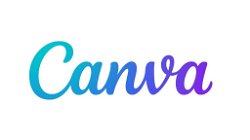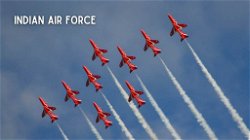Optimizing Images for Faster Web Loading on WordPress
Alvish Asher
. 2 min read
Many people who are just beginning their blogging experience will simply upload images without first attempting to optimize them for the web, which can lead to slower loading times for their website. However, there's a person I met online in stranger chat, who shared a helpful tip on improving image optimization. By incorporating best practices for image optimization into your regular blogging routine, you can rectify this situation and ensure that your website loads more quickly. In this article, we will not only share the standard techniques, but also the stranger's innovative approach to optimizing images for the web while maintaining their original level of quality.

Advantages to Being Able to Optimize Images
In image optimization, the goal is to decrease the size of image files while maintaining as high a level of quality as possible. The ideal situation for your website would be to display images of a high quality without causing the pages to load more slowly due to the presence of large files.
Smush
The WordPress plugin known as Smush is by far the most popular option for image compression and optimization. It uses lossless compression, which means that there is no loss of quality in the image file, to reduce the size of each of your images by up to 5 MB, either individually or in bulk. In addition to this, it utilizes other techniques to enhance the performance of the page, such as lazy loading and auto-resizing.
Compress the Images in Your WordPress Site
You can lessen the file size of images by using a compression method. The loading time of an image file that has been compressed will be reduced, which will result in an increased page speed for your WordPress website. Utilizing an image compression plugin is going to be the quickest method for compressing images in WordPress. Plugins of this type frequently optimize images in ways other than simply by employing compression.
TinyPNGs
TinyPNG WebP and JPEG, among others. Simply upload the picture you want to compress into the tool, and it will automatically reduce its size for you to a more manageable level. Additionally, the tool is capable of simultaneously compressing multiple files.
JPEGs
The use of JPEG files is recommended for content that is intended for both print and the web. The format that is used for this kind of image file is referred to as a "lossy" format. Some of the information contained in the file of a larger image is lost when the image is converted to a JPEG format.
Image Resizing and Cropping Tools
If you are working with files that have dimensions that are significantly larger than what you normally need to showcase on your website, you can easily resize or crop them before uploading them on your website. This is the best course of action to take in this situation. You will reduce the load time of your website and save disk space.
Retina Displays
Because retina displays have a significantly higher pixel density than standard displays, images viewed on a retina display may appear blurry on a display with a standard pixel density. If we detect that the user's device has a Retina display, we serve the image at twice the normal size so that it can be viewed with the highest possible level of detail.
More Stories from
The Rise of Virtual Travel: Exploring the World from the Comfort of Home
This article explores the surging popularity of virtual travel, a modern phenomenon that allows individuals to experience the world's wonders from the comfort of their homes.
The Art of Photography: Capturing Moments that Last a Lifetime
In this article, we explore the fascinating world of photography, tracing its evolution from its early beginnings to the digital age.
Canva: Empowering Creativity and Design Simplicity
Discover how Canva, the user-friendly graphic design platform, has revolutionized the world of visual communication.
English Grammar: A Comprehensive Guide
This article provides a comprehensive guide to English grammar, covering essential topics such as parts of speech, sentence structure, tenses, and common grammatical errors.
Indian Air Force: Safeguarding the Skies with Excellence
This article provides a concise overview of the Indian Air Force (IAF), highlighting its mission, organization, capabilities, and significant contributions to India's defense.







.png?width=40&aspect_ratio=1:1)
.png?width=40&aspect_ratio=1:1)




.png?width=40&aspect_ratio=1:1)